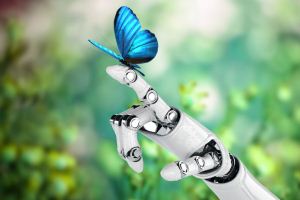Who needs humanoid robots?

The humanoid robot has been the go-to concept in science fiction for decades – but as the technology appears to be on the cusp of becoming a reality, have other areas of innovation already overtaken the vision? Indeed, are AI and machine learning, theoretically core solutions in the humanoid concept, actually making the humanoid robot redundant before it even comes into being?
Nick Thompson, managing director, DCSL Software asks, in a world of self-driving cars and intelligent Personal Assistant technology, why would we need humanoid robots?
Science fiction stalwart
The idea of the human like robot continues to intrigue, from the film Bladerunner to the Channel 4 drama Humans. And in a developed world struggling to find people willing to undertake low paid, mundane tasks the idea of a non sentient – yet familiar looking – identity able to pick up the slack offers theoretical appeal.
But just consider – in a world increasingly dominated by automation, by sensors and intelligent technology leveraging extraordinary innovation including computer vision and augmented reality, what tasks are these humanoids still required to undertake?
Why, for example, will you need a humanoid robot to drive you to work when self-driving cars are ubiquitous? Especially when self-driving cars will not only be far safer but also enable a complete rethink of the road network, paving the way for less concrete and a re-greening of the environment.
Where is the need for an automaton to undertake basic household chores when intelligent houses will automate so many of those tasks, from the use of IoT to re-stock the fridge to leveraging the progress in computer vision to recognise people, objects and locations and undertake washing and cleaning, gardening and decorating?
Even the concept of a humanoid ‘Man Friday’ is already outdated. Google’s Intelligent PA technology can make phone calls and book appointments on your behalf – all while sounding extraordinarily human-like; why wait for a robotic humanoid when a cloud based algorithm is already doing the job?
Even the companionship aspect of the ‘Man Friday’ relationship doesn’t stack up in reality – despite the compelling potential opportunities for using humanoid robots to solve the current crisis in both caring and companionship.
Changing attitudes

Nick Thompson
If this technology was available today – perfect; the current generation of elderly would be likely to resist direct interaction with technology and automation and would be far less distressed, especially those with dementia, by a robot humanoid carer indistinguishable from an actual human.
But this degree of actuality is way off – and by the time a humanoid robot carer has the maturity to safely meet this need, everything will have changed again. From in home health monitoring and strides forward in disease prevention and management, to the essential shift in attitudes to technology, reality will be very different. The younger generation is already completely inured to the concept of interacting with technology, so why the need to dress it up with a human-like wrapper?
The truth is that automation through IoT, AI and machine learning is already addressing the roles we perceived for humanoid robots, way before the robotic technology has reached the required level of maturity.
Find the why
So, what next for humanoid robots – are they destined to be consigned to the scrap heap before even hitting the market?
There are, however, plenty of opportunities for the extraordinary innovations within the field of robotics to be embraced. Rather than creating complete humanoid robots, the ability to replace individual limbs, with robotic alternatives is extraordinary. When today’s robots already have the most amazing mobility, agility and speed, the outlook for those individuals who have lost limbs to regain dexterity is compelling.
From building houses with more reactive technology – such as laundry chutes into intelligent washing machines that can wash, dry and fold or intelligent lawn mowers that can not only mow but weed and clear up after the dog, to rethinking the way we travel to reduce congestion and air pollution and transforming the lives of those with damaged bodies through robotics, our focus must be on the why, on solving problems that truly exist, not fulfilling a science fiction fantasy.
The author of this blog is Nick Thompson, managing director, DCSL Software
Comment on this article below or via Twitter @IoTGN
